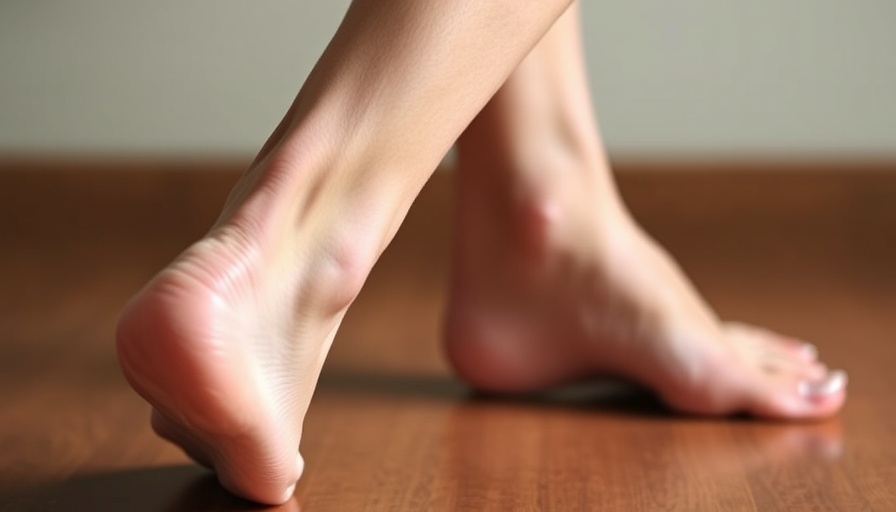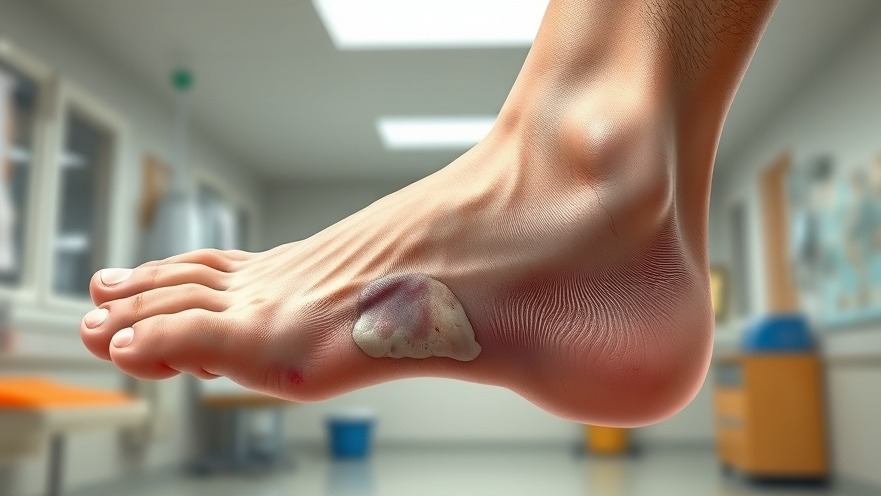
Understanding Plantar Fasciitis: The Pain Beneath Your Feet
Plantar fasciitis is more than just a common foot ailment; it affects millions, transforming daily activities into painful struggles. The plantar fascia, a thick band of tissue running from your heel to your toes, supports your arch and absorbs shock. When overstressed, it can become inflamed, leading to debilitating heel pain. Understanding the underlying causes and symptoms is crucial in addressing this widespread condition.
The Symptoms That Signal Plantar Fasciitis
If you've ever experienced a stabbing pain in the bottom of your heel, especially with your first steps in the morning, you may be encountering plantar fasciitis. Beyond the initial sharp pain, many report a dull ache throughout the day, often resembling the agony of walking on a stone. Identifying these signs early can fast-track your path to healing.
Factors Contributing to Plantar Fasciitis
Several factors can contribute to developing plantar fasciitis, from age and weight to your choice of footwear. Runners and those who stand for extended periods are particularly at risk due to the repetitive stress placed on their feet. However, it is essential to recognize that lifestyle choices and foot biomechanics also play a significant role. Do you find yourself favoring one foot over the other, or wearing shoes that lack proper arch support? These habits can worsen your condition, leading to a longer recovery.
Effective Treatments for Healing
Healing plantar fasciitis requires a tailored approach, incorporating various treatments designed to target its causes. At My FootDr, specialists emphasize offloading the plantar fascia to encourage recovery while maintaining an active lifestyle.
- Custom Orthotics: Specialized foot orthotics can provide crucial support, redistributing pressure and allowing for better alignment during movement.
- Stretching and Strengthening: A progressive program designed to enhance flexibility and strength in the foot and calf can promote healing and prevent future issues.
- Shockwave Therapy: This innovative treatment uses sound waves to stimulate healing in damaged tissues, providing relief for chronic cases.
- Footwear Modifications: Adjusting the type of shoes you wear and their cushioning properties can make a significant difference.
By understanding and implementing these treatments, patients can effectively manage their symptoms while promoting faster recovery.
How Long Will Recovery Take?
Recovery from plantar fasciitis varies widely among individuals. Unlike a broken bone that can be immobilized, the plantar fascia is engaged constantly with each step, making proper management essential. On average, patients may experience symptoms for several weeks to months if not adeptly treated. Adhering to a structured treatment plan greatly enhances recovery time.
When to Seek Professional Help
If symptoms persist despite self-care measures, it might be time to consult a specialist. Podiatrists can provide a comprehensive assessment and customize a treatment plan that addresses your specific needs. Don't wait until the pain becomes unbearable—early intervention often leads to substantially better outcomes.
Understanding the Role of Medipedi Treatments
Many individuals seeking relief might consider medi pedi treatments, which combine aesthetic and health benefits. These treatments typically focus on foot health while providing the care that goes beyond a regular pedicure. Waterless medi pedi options are popular in spas, offering hygienic solutions that promote healthier feet. If you're looking for a potential remedy alongside conventional treatments, exploring options like medical pedicure spas could be beneficial.
Final Thoughts and Call to Action
Plantar fasciitis may disrupt your life, but understanding your condition is the first step toward recovery. Whether it's improving your shoe selection, investing in custom orthotics, or seeking professional help, proactive measures can significantly enhance your quality of life. Don’t allow heel pain to dictate your activities—explore treatment options today, and step confidently into a pain-free future. For more information or to book an appointment with our dedicated team of podiatrists, reach out at My FootDr.
 Add Row
Add Row  Add
Add 




Write A Comment